I earn commissions from my affiliated links. Please see my disclosure policy for more details.
Introducing Montessori floor beds – a game-changer for your child’s early years! Designed to promote independence and self-confidence, these beds provide a safe and empowering Montessori bedroom environment that allows your child to explore and learn at their own pace.
Unlike traditional cribs, Montessori floor beds provide children with the freedom to move in and out of bed without any barriers. This empowers them to take charge of their own bedtime routines, fostering a sense of autonomy and self-reliance from a young age.
With Montessori floor beds, your child can independently access their toys, books, and other essentials within their reach, fostering a sense of responsibility and self-sufficiency. This promotes a positive relationship with their environment and aids in their cognitive and motor development.

More than just a place to sleep, Montessori floor beds become a dedicated space where your child can play, explore, and develop their individuality. By incorporating natural and stimulating elements in their sleeping area, this approach encourage a deep connection with nature and a sense of wonder.
Invest in a Montessori floor bed today and empower your child’s independence and self-confidence during their early years. Watch them thrive as they become active participants in creating their own world!
What is a Montessori Floor Bed?
A Montessori floor bed is a low-profile bed designed for young children that allows them to sleep and play at floor level. Inspired by the Montessori educational philosophy, which emphasizes independence and freedom of movement, these beds provide a safe and nurturing environment for children to develop their cognitive and motor skills.
The mattress is placed directly on the floor, without any restrictive barriers such as rails or crib walls. This enables children to easily enter and exit their bed independently, empowering them to take control of their own sleep routines. By giving children the freedom to move around their sleeping space, floor beds promote a sense of autonomy and self-reliance.
Typically made from natural and non-toxic materials, these beds ensure a healthy and safe sleep environment for young children. They come in various sizes, ranging from toddler to twin, allowing parents to choose the most suitable option for their child’s age and size.
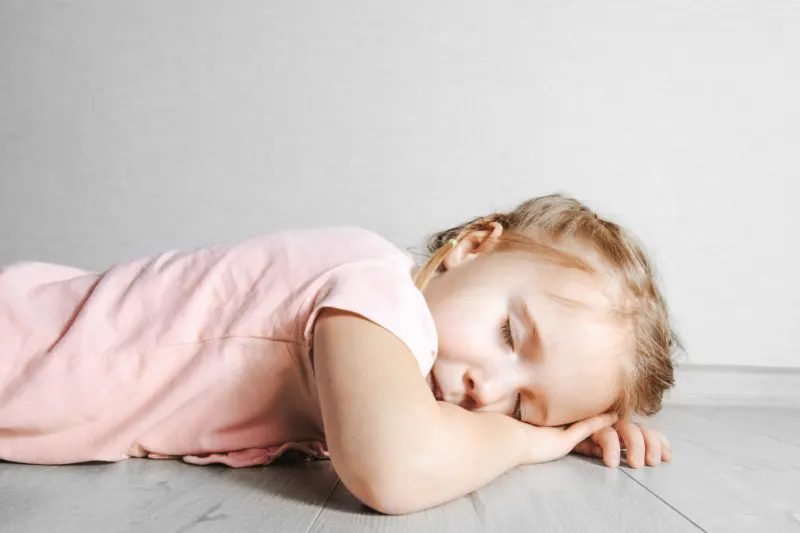
The Philosophy Behind Montessori Floor Beds
The Montessori educational approach, developed by Italian physician and educator Maria Montessori, is centered around the belief that children are naturally curious and capable of independent learning. This philosophy extends to all areas of a child’s life, including their sleep environment.
Montessori floor beds align with the principles of the Montessori philosophy by providing children with the freedom to explore and learn at their own pace. By removing the barriers of a traditional crib, these beds encourage independence, self-confidence, and a sense of responsibility in children from an early age.
A Montessori floor bed allows children the freedom to move and explore their surroundings, promoting their physical and cognitive development. They can easily access their toys, books, and other essentials within their reach, fostering a sense of ownership and self-sufficiency.
This creates a positive and empowering relationship between the child and their sleep environment, setting the foundation for a lifelong love of learning and a strong sense of self.
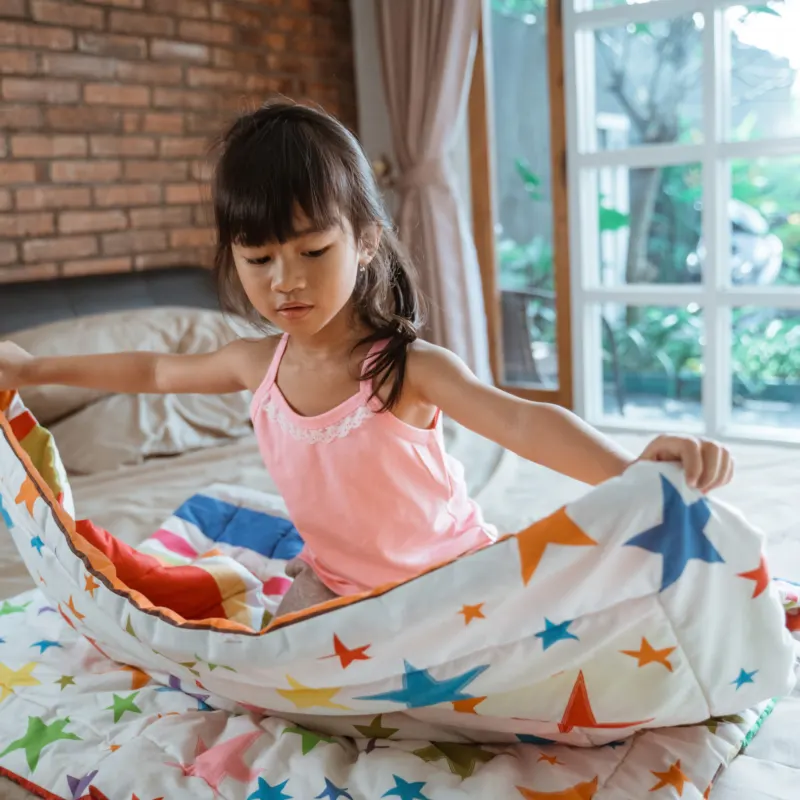
The Montessori philosophy believes that children learn best through hands-on experiences and self-directed play. Montessori floor beds provide the perfect space for children to engage in imaginative play, problem-solving, and creative exploration.
By incorporating natural and stimulating elements in their sleeping area, such as plants, artwork, and sensory materials, Montessori floor beds encourage a deep connection with nature and a sense of wonder.
Benefits of Using a Montessori Floor Bed
Promotes Independence
Montessori floor beds empower children to take charge of their own bedtime routines and develop healthy sleep habits. By allowing them to enter and exit their bed independently, these beds foster a sense of autonomy and self-reliance in children from an early age. They learn to listen to their bodies and make decisions about when they are tired or need to rest.
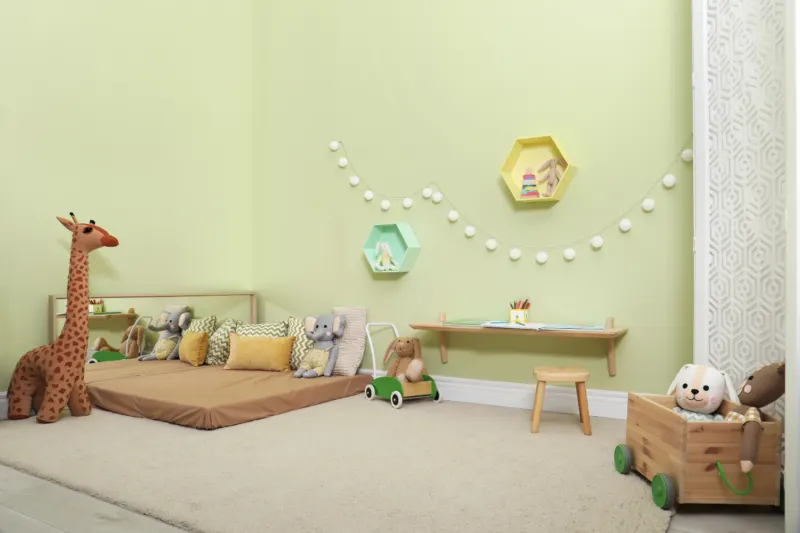
Encourages Self-Confidence
With the freedom to explore and move around their sleeping space, children develop a sense of confidence in their abilities. They learn to trust themselves and their instincts, which translates into other areas of their lives. This self-confidence builds a strong foundation for future learning and personal growth.
Fosters Cognitive and Motor Development
Montessori floor beds provide a stimulating environment for children to engage in movement and exploration. By giving them the freedom to access their toys, books, and other essentials within their reach, these beds promote cognitive and motor development. Children learn to problem-solve, make choices, and develop their fine and gross motor skills.
Creates a Positive Relationship with the Sleep Environment
Montessori floor beds encourage a deep connection with nature and the child’s surroundings. By incorporating natural and stimulating elements in the sleeping area, such as plants, artwork, and sensory materials, these beds promote a sense of calm and wonder. This positive relationship with the sleep environment sets the foundation for a lifelong love of learning.
Supports Emotional Well-Being
Montessori floor beds provide a safe and nurturing sleep environment for children. They offer a sense of security and comfort, promoting a healthy sleep routine and emotional well-being. Children feel empowered and in control of their own sleep experience, which contributes to their overall happiness and contentment.
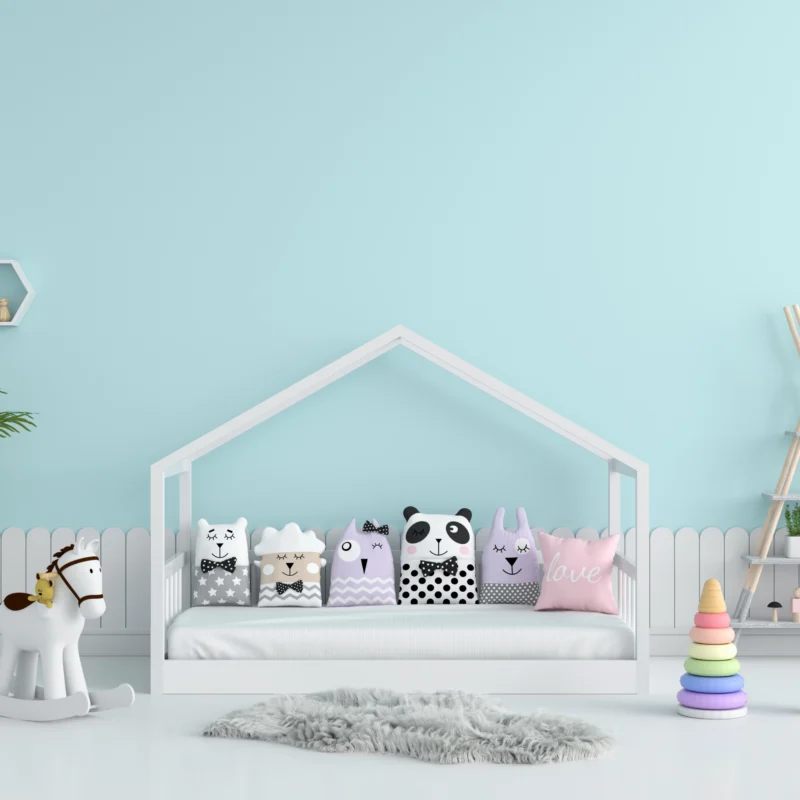
How to Set Up a Montessori Floor Bed
Designed to promote independence and self-confidence, these beds provide a safe and empowering sleep environment that allows your child to explore and learn at their own pace.
Unlike traditional cribs, Montessori floor beds provide children with the freedom to move in and out of bed without any barriers. This empowers them to take charge of their own bedtime routines, fostering a sense of autonomy and self-reliance from a young age.
Creating a Safe Environment for a Montessori Floor Bed
Using a Montessori floor bed offers numerous benefits for your child’s development.
Firstly, it promotes a sense of independence. With the freedom to move in and out of bed, your child can learn to regulate their sleep patterns and develop a sense of responsibility for their own sleep routine. They can choose when to go to bed and when to wake up, giving them a sense of control over their own bodies.
Secondly, a Montessori floor bed encourages self-confidence. By providing a safe and empowering sleep environment, children feel secure and capable of taking charge of their sleeping arrangements. They learn to trust their own abilities and become more self-assured in their decision-making skills. This confidence extends beyond the bedroom and into other areas of their lives.
Furthermore, Montessori floor beds promote cognitive and motor development. With the freedom to explore their sleeping area, children can independently access toys, books, and other essentials within their reach.
This fosters a sense of responsibility and self-sufficiency, as they learn to take care of their belongings and organize their personal space. It also allows for greater movement during sleep, which aids in developing coordination and balance.
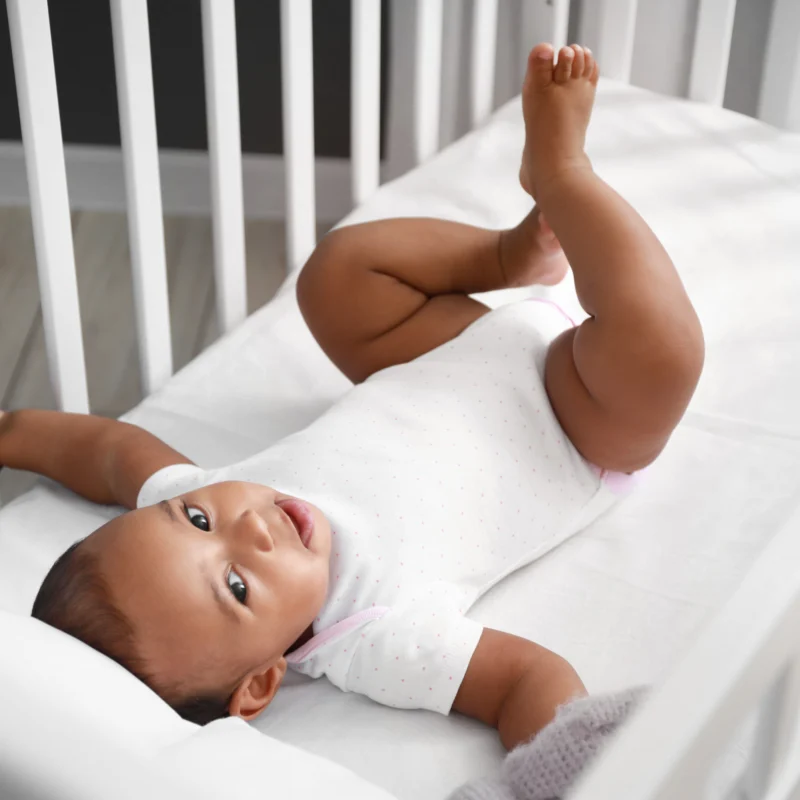
Transitioning from a Crib to a Montessori Floor Bed
Setting up a Montessori floor bed is relatively simple. Start by choosing a low-to-the-ground bed frame or mattress that allows your child to easily get in and out of bed. Opt for a frame made from natural materials, such as wood, to create a warm and inviting sleep environment.
Next, consider the bedding. Use a fitted sheet to ensure a snug fit and avoid any loose or dangling fabric that could pose a safety risk. Keep the bedding simple and minimalistic, using natural materials like cotton or bamboo for added comfort.
To make the sleep area more inviting, consider incorporating stimulating elements, such as mobiles, wall art, or soft toys. These items should be carefully selected to encourage exploration and curiosity without overwhelming the space. Additionally, ensure that the sleep area is free from any hazards or sharp edges that could cause injury.
Child Bed Safety 101
Safety is paramount when it comes to setting up a Montessori floor bed. Here are some tips to create a safe sleep environment for your child:
- Remove any potential hazards from the sleep area, such as cords, small objects, or sharp edges.
- Use a bed rail or floor mat initially to prevent falls while your child adjusts to the new sleep arrangement.
- Ensure the room is childproofed, with electrical outlets covered, furniture secured to the wall, and any potential dangers out of reach.
- Regularly check the bed frame and mattress for wear and tear, ensuring they are in good condition and free from any defects.
- Keep the sleep area clean and free from allergens, regularly washing bedding and ensuring proper ventilation in the room.
By taking these precautions, you can create a safe and nurturing sleep environment that fosters independence and self-confidence in your child.
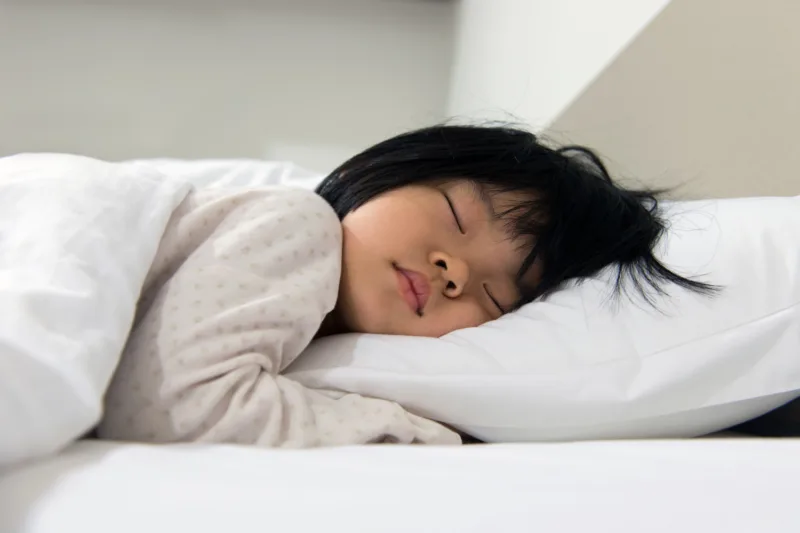
Transitioning to a Montessori Floor Bed
Transitioning from a crib can be an exciting milestone for both you and your child. Here are some tips to make the transition smoother:
- Gradually introduce the concept of a floor bed by allowing your child to play and explore in their crib during waking hours.
- Start by removing one side of the crib, creating an open space that mimics the freedom of a floor bed.
- Encourage your child to spend more time in their crib during the day, gradually reducing the use of the traditional crib.
- Once your child is comfortable and confident in the crib without the side, you can transition them to a Montessori floor bed.
Remember, each child is unique, and the transition process may take time. Be patient and supportive, offering reassurance and encouragement throughout the process.
A Montessori floor bed is more than just a place to sleep – it becomes a dedicated space where your child can play, explore, and develop their individuality. By incorporating natural and stimulating elements in their sleeping area, Montessori floor beds encourage a deep connection with nature and a sense of wonder.

With a Montessori floor bed, your child can independently access their toys, books, and other essentials within their reach. This fosters a sense of responsibility and self-sufficiency, as they learn to take care of their belongings and organize their personal space. It also promotes a positive relationship with their environment, as they develop an understanding of their surroundings and how to navigate them.
Furthermore, Montessori floor beds allow for greater movement during sleep, which aids in developing coordination and balance. As children explore their sleep area, they engage their senses and develop a deeper understanding of their own bodies. This self-awareness contributes to their overall confidence and independence.
Choosing the Right Sleep Solution for Your Child
Despite the many benefits of Montessori floor beds, there are some common misconceptions that may deter parents from considering this sleep solution. Let’s address a few of these misconceptions:
Safety Concerns
Some parents worry that a Montessori floor bed may pose safety risks, such as falls or suffocation. However, when set up correctly and with proper supervision, these concerns can be mitigated. By creating a safe sleep environment and gradually transitioning your child, you can ensure their safety while promoting independence.
Lack of Boundaries
Critics argue that Montessori floor beds lack the structure and boundaries that cribs provide. However, it is important to remember that boundaries can be created in other ways, such as using a floor mat or bed rail initially. Additionally, children can learn to establish their own boundaries and develop a sense of personal space through guidance and modeling.
Transition Difficulties
Some parents worry that transitioning from a crib to a Montessori floor bed may be challenging for their child. While every child is different, with patience, consistency, and support, most children adapt well to the transition. It is crucial to respect your child’s individuality and allow them to adjust at their own pace.

